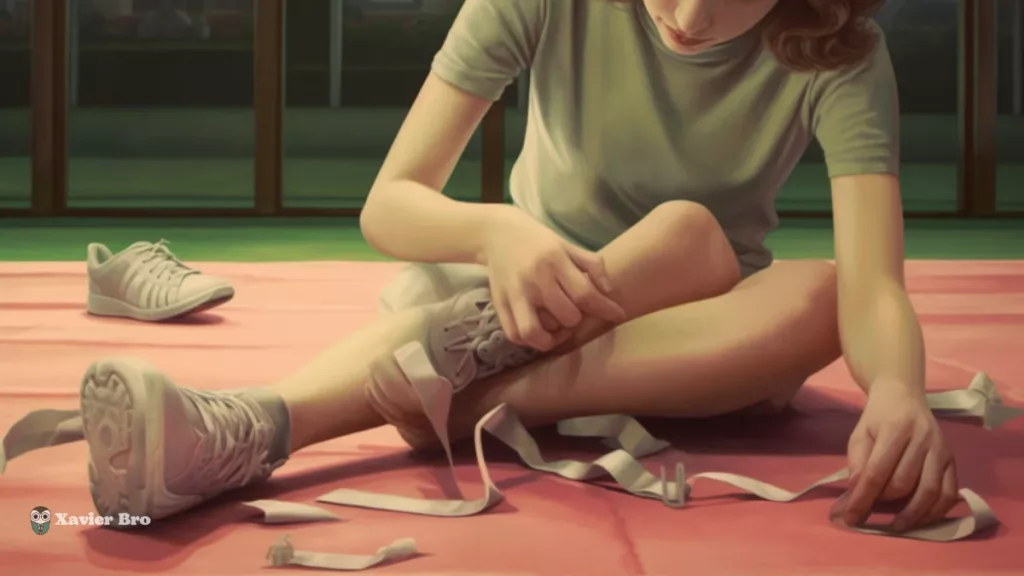Moleskin is a broadly rated product. It is most frequently used for controlling and covering blisters, hives, and scratches. Likewise, it is used for essential repairs, sound reduction, and even self-improvement. Moleskin is soft on one side and sticky on the other. Many walkers, runners, and backpackers use moleskin for blisters from infection and to provide ease during their workouts. You can put moleskin straight to the inside of the shoes and clothes to make them comfier. Thus, moleskin tends to remain in place better than standard bandages.
Use Moleskin for Blisters
You can use moleskin for blisters from popping, which is mainly painful. It even prevents the risk of infection in traveling.
Stiffness of Moleskin
There are various brands of moleskin for blisters. They range in thickness, sticky point, and friction. Yet, they vary in stiffness. When it comes to applying load, fixed ones work best. Flexible elastic moleskin can’t even spread the shear pressure.
However, they are more comfy to apply to curvy sites like the toes. Applying shear load over a more extensive surface area reduces shear load per unit area. It was first depicted in 2013 by Carlson.
Ways to Apply
There is a method to apply the moleskin on the blisters.
Drain the blister
Unless the blister is painful or in an uneasy spot to treat, you should not empty it. The chance of infection rises when a blister is popped. Likewise, if the upper layer of skin on the blister is totally or partly peeled away, the uncovered skin will tend to deepen the wound.
If you still want to pop and drain your blister, sanitize and dry the spot. Then, puncture a hollow at the bottom of the blister. You can even apply mild pressure on the blister with the thumb to allow the liquid out.
Treat the blister
Pierce the spot with a sterile needle and gently press out all the liquid, holding the blister’s top untouched to cover the raw skin beneath. Also, you will want to apply antiseptic to the blister and covering area and let it dry for fifteen seconds. It will serve as a glue for the moleskin.
Cut a hole slightly bigger
Cut a little hole in the blister in a part of the moleskin. It is best to fold it in half and cut out a semicircle half the size of the blister along the tucked edge. You can make a hole bigger than the blister and make a defensive well that prevents anything from scratching against it.

Shape the moleskin
The moleskin should be larger than the blister, with a surface area to stick to the skin about one-fourth size around the blister. Cut it with rounded edges, increasing the chances to peel off easily. Further, fold the non-adhesive sides in half and cut a half-circle-shaped spot.
Place it around your blister
Peel off the back and place the sticky side against the skin so the blister is in the center of the hole. Yet, the moleskin should fit around the blister with about 1 cm of material left between the hole and the border of the moleskin. You can apply a second layer on top of your blister, flush with the first layer, or rise above it.
Place another piece to cover the hole
You can place another moleskin on top to protect the hole and blister. This piece must be the exact size of the pieces underneath it. However, it will act as a lid, covering the blister from friction and dust.
Tape it to your skin
Attach the tape across the moleskin with athletic or duct tape. Likewise, wrap it fully around the foot, ankle, or toe if the blister is on any of these sites. It ensures the tape doesn’t peel off when rubbing it. You can carry on with your exercises pain-free.
Moleskin prevention
There are various prevention tips to remember while moleskin is applied to the blister. If you are experiencing sores, tape a portion of moleskin to the skin the size of the affected area to the right spot.
Moreover, covering the ballet’s toes with moleskin will prevent the top of the flats from wearing out. You can clean and reapply these steps. If the infection lasts, consider a doctor.
Moleskin treatment
Take a moleskin with a hole in it slightly bigger than the blister. So, you place it so that nothing sticks to the blister. However, some people leave it, while others apply an antiseptic.
Be Careful With Your Blister Roof
Don’t stick it directly if you apply moleskin on an already-formed blister. It is because the last thing you do is rip the roof off the blister. Hence, put a dressing on it for safety and to soak fluids from the blister.
Where to Purchase it
Despite the extensive uses of moleskin, only a few moleskin brands are available. Some products are padded, pre-cut shapes and sheets. You can locate it at general stores, pharmacies in nearby locations, or online. The best moleskin types include the Durable Moleskin Roll, Plus Padding Moleskin Roll, and Moleskin Blister Dressing Sheets/Kit.
Conclusion
No doubt, it reduces pain in some people with their hotspots. Yet, you can use moleskin for blisters. It reduces friction and gives relief from pain. The most suitable way to define how moleskin works is by applying the shear burden across a more significant skin site.
Moleskin is a thick cotton tape. A critical part of moleskin application is to apply it to an area more extensive than the blister. The more rigid the blister, the better the application.
FAQs on Use Moleskin for Blisters
How to remove moleskin from the blister?
You can clear the moleskin after leaving it for around three days. Remove it if the moleskin sides curl up, making it peel off, or if it wrinkles from friction. If the dressing touches the skin, avoid pulling it off. Wetting it will peel off more easily.
How to use skin-care products in use moleskin for blisters?
Use these products to increase the area blister-free. A gold bond body powder prevents moisture and relieves itching in the opening stages of foot fungal cases or minor skin irritation. Body glide is an anti-blister balm applied directly onto your skin and makes a zero-friction surface.
I hope you enjoy our article. Do check out more of our amazing articles.
